
Recognizing Plant Physiology first authors: Thiago Alexandre Moraes
Plant Physiology, Plant Physiology: Author ProfilesThiago Alexandre Moraes, first author of Response of the circadian clock and diel starch turnover to one day of low light or low CO2
Name: Thiago Alexandre Moraes
Current Position: Postdoctoral Researcher, Max Planck Institute of Molecular Plant Physiology, Potsdam-Golm, Germany
Education: PhD…

How come approaching questions knowing little helped my career a lot?
Blog0 Comments
/
Guest post by Ron Milo, Professor, Department of Plant and Environmental Sciences, Weizmann Institute of Science, Rehovot, Israel https://www.weizmann.ac.il/pla...
When I worked on analyzing biological networks I thought it was a disgrace I don’t know more about the relevant subject. Yet what we…

Enzymatic Sweeteners as Tools for Biotech Applications
Research, The Plant Cell, The Plant Cell: In a NutshellLouveau et al. investigate plant natural products in the large family of enzymes called arabinosyltransferases https://doi.org/10.1105/tpc.18.00641
Background: Plants produce a diverse array of natural products. These compounds have important ecological functions, providing protection against pests,…

A new approach to graduate professional development; lessons learned from a leadership retreat
Blog, Careers - BlogIf you had 48 free hours, what are the odds you’d spend them at a leadership retreat? Prior to my own experience I would have said “not likely”. After all, I’m a second-year graduate student with coursework, experiments, and TA responsibilities clamoring for my time. I’m also a member of the…
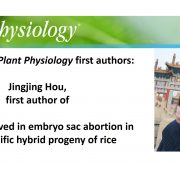
Recognizing Plant Physiology first authors: Jingjing Hou
Plant Physiology, Plant Physiology: Author ProfilesJingjing Hou, first author of ESA1 is involved in embryo sac abortion in interspecific hybrid progeny of rice
Current Position: Ph.D. candidate, Department of Plant Genetics and Breeding, China Agricultural University, Beijing, China
Education:
2013-M.S., Agronomy, China Agricultural…
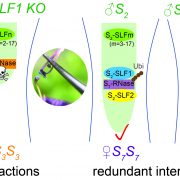
Petunia Battlefield in Style: S-RNases vs. SLF proteins
Research, The Plant Cell, The Plant Cell: In a NutshellSun et al. use CRISPR/Cas9 in Petunia to establish the essential role of SLF proteins in self-compatibility and reveal their complex interactions with S-RNases. Plant Cell https://doi.org/10.1105/tpc.18.00615.
By Linhan Sun and Teh-hui Kao, The Pennsylvania State University
Background: Plant…
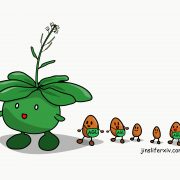
Seed size is regulated by siRNAs from Arabidopsis maternal tissue in a spatial-temporal manner ($)(PNAS)
Plant Science Research WeeklyStudying seed development is important for understanding plant evolution and engineering food production. Previous discoveries have shown that maternal small interfering RNAs (siRNAs), which induce RNA-directed DNA methylation (RdDM) through NRPD1-mediated pathway, regulate seed development in Arabidopsis.…
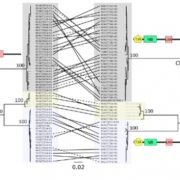
The Arabidopsis thaliana pan-NLRome; towards exploring NLR diversity in plants (bioRxiv)
Plant Science Research WeeklyNucleotide-binding leucine-rich repeat (NLRs) receptors are involved in the intracellular recognition of pathogen effectors. Hundreds of genes encode these NLRs, and the genes are highly polymorphic. So far, a limited number of NLRs were characterized, and three mechanisms of effector recognition have…
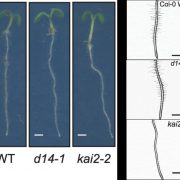
KAI2 regulates root and root hair development by modulating auxin distribution (bioRxiv)
Plant Science Research WeeklyTo optimize growth, plant development is regulated by environmental information. Root morphology is adaptable to stimuli due to a network of phytohormone signalling pathways. Here Villaecija et al. studied the roles of strigolactones (SL) and karrikins (KL) signalling in controlling root and root hair…

